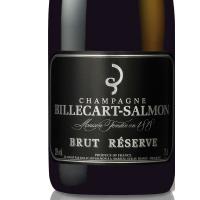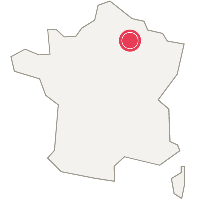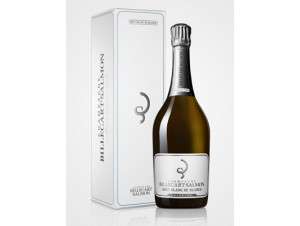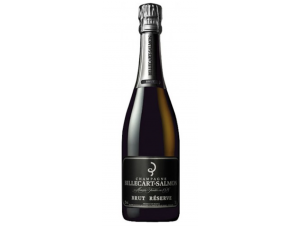You have no items in your shopping cart.
Champagne
Champagne Billecart-Salmon
(17 customer reviews)
From the Côte des Blancs to the Montagne de Reims, via the Vallée de la Marne, the vines of Billecart Salmon champagne flourish under the Champagne sun. More than 40 Champagne crus grow within a 20-kilometer radius of Épernay, and for over 200 years, they have contributed to the production of the company's champagne. Find out more
 Recommended by
Recommended byParker Wine Advocate - Wine Decider - Bettane et Desseauve avant 2020
-

Shipped in
secured packaging -

Garantie anti-casse :
Prise en charge totale
The winemaker
Billecart Salmon champagne, for over 200 years
For champagne Billecart Salmon, it all began in 1818, in Mareuil-sur-Aÿ, when Nicolas François Billecart married Elisabeth Salmon. Nicolas François joined forces with his brother-in-law, Elisabeth's brother, who had a passion for oenology. Elisabeth's brother-in-law will be in charge of making the wines, while Nicolas will be in charge of sales. For 7 generations now, the couple's descendants have endeavored to respect the oath of their ancestors: "give priority to quality, aim for excellence".
Billecart Salmon's Clos Saint-Hilaire
Champagne from Maison Billecart Salmon comes from vines covering 300 hectares, 100 of which are farmed on its own estate. A total of 40 crus are used to make the champagne. They are composed of pinot noir, pinot meunier and chardonnay. On the Clos Saint Hilaire, the ancestral champenoise methods remain and contribute to biodiversity. A draught horse is used to work the land, as well as sheep. The presence of the latter allows the soil to become more porous. As a result, the roots can grow deeper, and the minerals they extract from the soil encourage the growth of smaller, more concentrated grapes.
The Champagne Clos Saint Hilaire, named after the patron saint of Mareuil-sur-Aÿ, is mainly made from pinot noir. Its fût vinification encourages it to develop its remarkable freshness and a complexity that many champagnes envy. Each vintage generates between 3,500 and 6,500 bottles, all numbered.
Between ancestral methods and advanced technology, the secret of Billecart Salmon champagne
While it's important to preserve ancestral methods, it would be a shame to miss out on technological developments. Champagne house Billecart Salmon uses progress to constantly improve the quality of its production. After switching to the débourbage à froid technique in the 1950s, it now uses cuves en inox. The fermentation can thus last longer, remaining at low temperature. This process leaves the raisin free to express all its delicate, airy aromas.
Vinification is carried out cru by cru and varietal by varietal. In addition to allowing traceability of plots, as well as varietals, this method sublishes the terroir, which can then express all its nuances.
Billecart Salmon's impressive barrel cellar
In a golden silence, 400 barrels and 24 foudres rest, spread across the two chais of the Maison Billecart Salmon. To reach them, you have to take a stone passageway, cut into the chalk. Once you've traversed the two kilometers of silent walkways, you'll find yourself in a magical, awe-inspiring space.
The site dates back to the 17th century. This is where, for three or four years, the non-vintage champagnes are forged. Vintage cuvées, on the other hand, have to wait for at least a decade, which allows them to reach their maturity by exalting their aromas. This is the time it takes for the champagne to assert itself, with finesse, and find its perfect balance, with elegance.
Billecart Salmon champagnes
Billecart Salmon Brut Réserve champagne
For the aperitif, but also for the meal, the champagne brut réserve offers harmonious balance. It is composed of 40% pinot meunier from the Marne Valley and the southern slopes of Épernay, 30% pinot noir from the Montagne de Reims and the Grande Vallée de la Marne, and 30% chardonnay from the various crus of the Marne.Its pale golden-yellow color is dotted with its fine bubbles that rise slowly, while its mousse is abundant and persistent. Its nose is floral, exhaling parfumes of ripe pear and fresh fruit. Its attack on the palate is frank and precise, and characterized by cheeky freshness. It is distinguished by a rich bouquet that pays tribute to its aging in traditional cellars.
Billecart Salmon Brut Rosé Champagne
Champagne Billecart Salmon Brut Rosé boasts a sparkling color, pale pink but imbued with warm, golden highlights. The rosé delights the palate with its finesse and liveliness and is wonderful as an aperitif. For lunch or dinner, it's the ideal companion to wild salmon and sushi. If you prefer it for dessert, it will sublimate all your red fruit preparations.Champagne Brut Rosé is made from 40% chardonnay from the various crus of the Marne, 30% pinot meunier from the Marne Valley and the southern slopes of Épernay and 30% pinot noir from the Montagne de Reims and the Grande Vallée de la Marne. The nez du champagne rosé is subtle and gourmand. It offers aromas of citrus zest and red fruit that develop into a long, fine bouquet. Its attack on the palate is precise. It always remains elegant and finishes beautifully with fresh raspberry notes.
Billecart Salmon Brut Sous Bois Champagne
Champagne Billecart Salmon Brut Sous Bois offers an equal proportion between the 3 Champagne grape varieties: one third Chardonnay Premiers et Grands Crus from the Côte des Blancs, one third Pinot Noir Premier et Grand Cru from the Montagne de Reims, Aÿ, Mareuil-sur-Aÿ and the last third Pinot Meunier from the Vallée de la Marne (right bank).The Brut Sous Bois displays a strong character and straightforwardness destined to accompany pan-fried chanterelle mushrooms and white meats. It boasts a radiant, crystalline golden-yellow color with brilliant reflections. Its fine bubbles are sparkling and regular. The nose of Champagne Brut Sous Bois is particularly rich, but always harmonious. It likes to blend fresh citrus and white fruit, but also dried fruit. Its palate reveals a burst of flavors with toasty notes.

19 wines available
between 30 € and 449.99 €
between 30 € and 449.99 €

216 wine's scans
on Twil application
on Twil application
You might like Voir tous les vins de la région
- -32%
- -26%
- -18%
- -22%




































 TWIL - Achat de Vin
TWIL - Achat de Vin


